In this post, we will show you how to update Drivers in Windows 11/10. You can use Device Manager, Windows Update, or third-party software or update it manually. As an example, we will see how to update the USB drivers. A device driver is software designed for a specific operating system like Windows 10. The OS uses it to communicate with other hardware devices. While Windows Update will automatically update your computer system, including the Device Drivers, there may be a time when you may have to be on your own. Update your drivers if you are facing issues.
How to update Drivers in Windows 11
You can correctly & properly update device drivers in Windows 11/10 in the following ways:
- Using Windows Update
- Using Device Manager
- Using Driver Update software
- Manually download & run the driver update setup file
- Use OEM tool.
Let us take a look at these four ways.
1] Using Windows Update
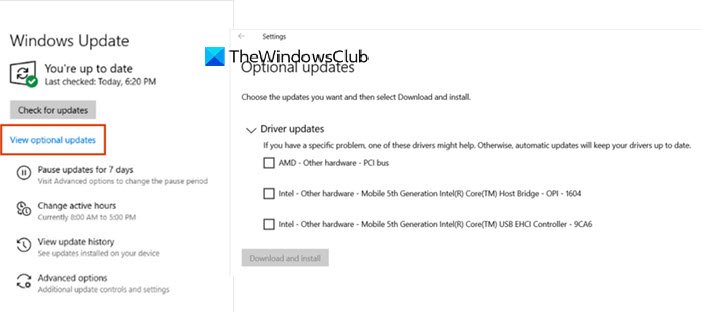
You can now run Windows Updates and see if any driver updates are available under Optional Updates. It’s quicker and easier.
To check the Driver and Optional Updates available to your system:
- Open Settings (Win + I)
- Navigate to Settings > Update & Security > Windows Update
- Right under it, look for a clickable link—View optional updates.
- Under Driver Updates, a list of updates will be available, which you can choose to install if you are facing an issue manually.
This feature is useful as you can see all the driver updates available for your system in one place. If you have a specific problem because of an outdated driver, you can choose to install it from here.
2] Using Device Manager
Right-click on the Start button to open the WinX Menu.
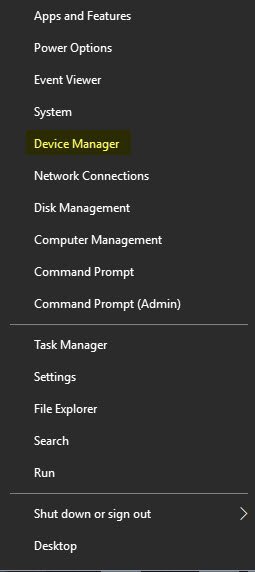
Select Device Manager to open the following tool.
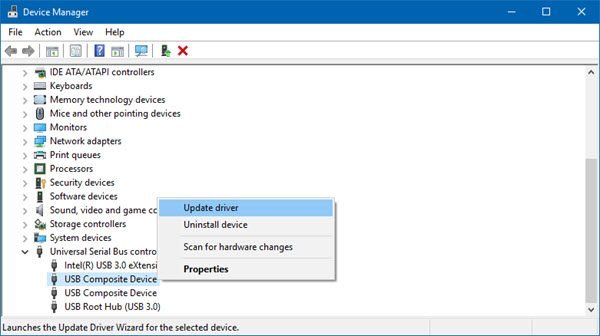
Here, you can uninstall, disable, enable rollback Device Drivers.
Now, identify the Driver you want to update. We will update the USB Driver as an example here.
So locate the Universal Serial Bus controller and double-click on it to expand it.
You will see various USB drivers installed. Please select the one you want to update and right-click on it.
The menu will show you the option to Update driver. Select it to open the following wizard.
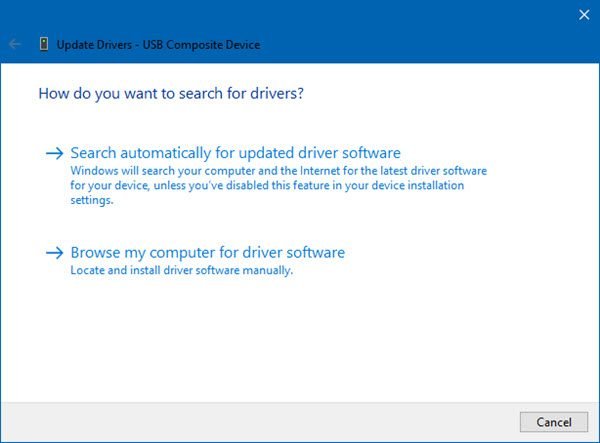
You may opt for either one of these:
- Search automatically for updated driver software
- Browse my computer for driver software.
Clicking on the 1st option will Search automatically for updated driver software and let Windows identify, download and install the driver.
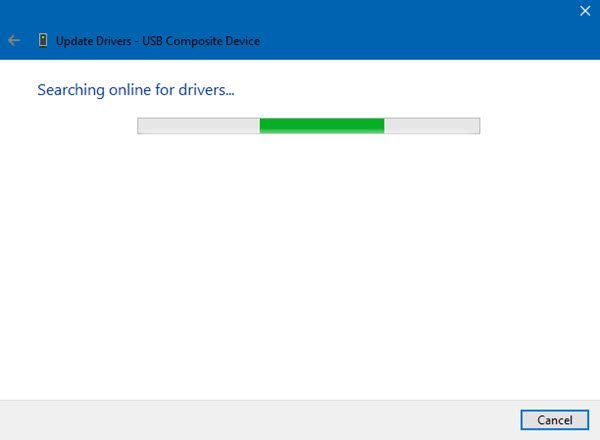
If an update is found, Windows will download and install it. But if no update is found, you will see the following screen.
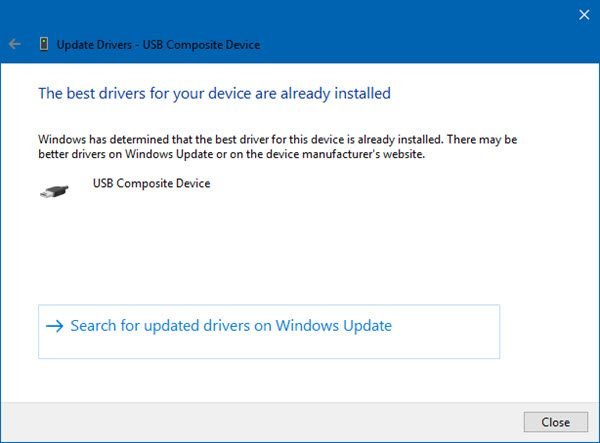
You may click on OK and exit or select Search for updated drivers on Windows Update.
Use the 2nd option if you have the driver file on your computer.
If you have the driver file on your computer, you can select Browse my computer for driver software.
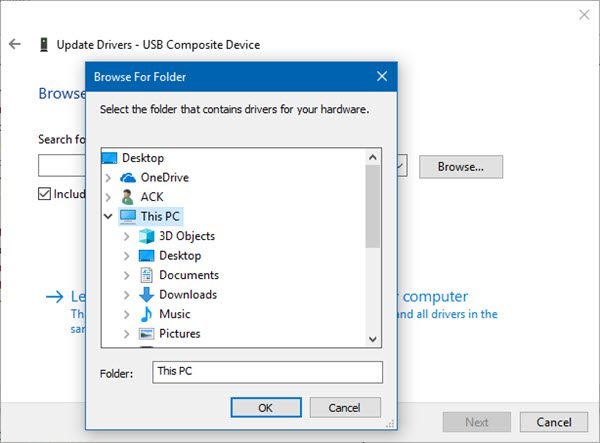
Select the driver software file on your hard disk and click OK to proceed.
There is another way. You can right-click on the Driver and select Properties to open the following window.
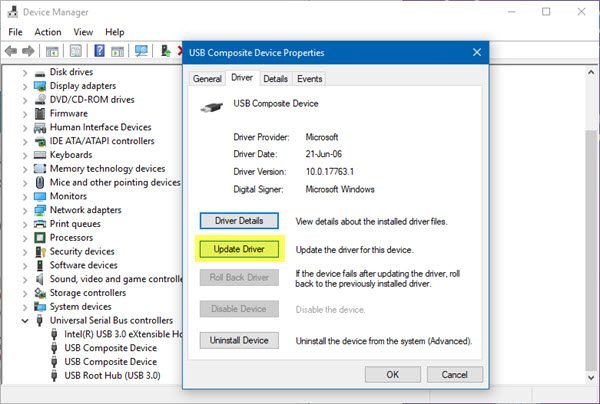
Click open the Driver tab, and you will see the button to Update Driver. You can use this way too.
Read: How to manually install a Driver using a .INF File.
UPDATE: In Device Manager, when a user selects Update driver:
- In Windows 10, version 1909 and earlier, Windows installs the highest-ranking driver from Windows Update, regardless of whether it is classified as Automatic or Manual.
- Starting in Windows 10 version 2004 and Windows 11, Windows only searches the local computer. When it fails to find a driver, Device Manager shows a button labeled Search for updated drivers on Windows Update, which opens the Settings app to the Windows Update page. To find this button, right-click a device and select Properties. On the Driver tab, select Update Driver and then Search automatically for drivers.
3] Using Driver Update software
While there are several free Driver Update software available that will help you update all drivers at the same time, we do not recommend this method, as things have been known to mess up. In any case, should you opt to use this method, do create a system restore point first.
4] Manually download & run the driver update setup file
This post shows where to download drivers for Windows from the official manufacturer’s websites. It also links to official tools you can use to download driver updates. This is also a safe route to use.
5] Use OEM tool
Manufacturers have also released special driver download software for their brands:
- Dell Update utility will help you download or update Dell Drivers
- Lenovo System Update helps you download Lenovo Drivers, Software, Firmware, Update BIOS.
- AMD users may use AMD Driver Autodetect.
- Intel users may use Intel Driver & Support Assistant.
- HP users can use the bundled HP Support Assistant.
- MyASUS app on ASUS computers.
So in short:
Follow one of the methods below to update your device drivers:
- You may check for Driver & Optional Updates via Windows Update to update your drivers
- You may visit the manufacturer’s site to download the drivers.
- Use a free driver update software
- If you have the INF driver file already on your computer then:
- Open Device Manager.
- Click the driver category to expand the menu.
- Then choose the relevant driver and right-click on it.
- Select Update Driver.
- Follow the on-screen wizard to finish updating your audio drivers.
- Use an OEM tool to update your drivers and firmware,
I hope you find this post helpful.
These posts will show you how to:
Leave a Reply